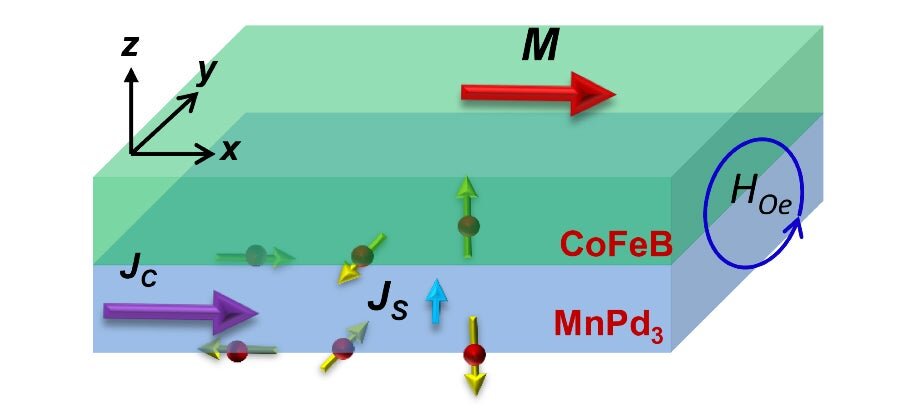As artificial intelligence (AI) technologies become increasingly complex, the need for computing power has skyrocketed. To meet this demand while reducing energy consumption, researchers are exploring new, energy-efficient hardware designs. This could allow for faster processing and AI training to take place within the device itself. Recently, researchers at Stanford University found a material that could bring a new type of memory closer to commercialization.
The Material and its Properties
In a new paper published in Nature Materials, the researchers demonstrated that a thin layer of a metallic compound called manganese palladium three had the necessary properties to facilitate a form of working memory that stores data in electron spin directions. This method of memory storage, known as spin orbit torque magnetoresistive random access memory or SOT-MRAM, has the potential to store data more quickly and efficiently than current methods.
SOT-MRAM relies on an intrinsic property of electrons called spin. In SOT-MRAM, a current flowing through one material generates specific spin directions. The movement of those electrons, coupled with their spin directions, creates a torque that can switch the spin directions and associated magnetic dipole moments of electrons in an adjacent magnetic material. With the right materials, storing magnetic data is as simple as switching the direction of an electrical current in the SOT layer.
The Advantages of Manganese Palladium Three
Most materials polarize electron spins in the y-direction if the current flows in the x-direction, making it difficult to store data more densely when electron spin directions are oriented up or down in the z-direction. But manganese palladium three has the properties required for SOT-MRAM applications. The material is able to generate spins in any orientation because its internal structure lacks the kind of crystal symmetry that would force all of the electrons into a particular orientation. Using manganese palladium three, the researchers were able to demonstrate magnetization switching in both the y- and z-directions without needing an external magnetic field.
In addition to its symmetry-breaking structure, manganese palladium three has several other properties that make it an excellent candidate for SOT-MRAM applications. It can survive and maintain its properties through the post-annealing process that electronics need to go through. Also, the layer of manganese palladium three is created using a process called magnetron sputtering, which is a technique that is already used in other aspects of memory-storage hardware.
The Future of Energy-Efficient Memory Storage
The result is a material that not only has novel properties that could help meet growing computing requirements, but can fit smoothly into current manufacturing techniques. The researchers are already working on prototypes of SOT-MRAM using manganese palladium three that will integrate into real devices. This breakthrough could pave the way for faster, more energy-efficient memory storage in the AI era.



Leave a Reply